This blog is part of a project exploring how the agenda for economic growth is being reshaped by forces of change, particularly technological change.
Today’s rapidly evolving manufacturing technologies including artificial intelligence, advanced robotics and the “internet of things”—often referred to as “Industry 4.0” technologies—are poised to reshape the global manufacturing landscape, with important consequences for the traditional role of manufacturing in economies’ structural transformation, growth, and job creation.
As we explore in our chapter in the just-published book “Growth in a Time of Change,” technology is changing the comparative advantages that drive competitiveness. Developing countries’ comparative advantage in low-skill, low-labor-cost production is at risk as routine low-skill tasks are increasingly automated. New technologies are demanding higher-level skills, raising the capital intensity of production, elevating the importance of innovation ecosystems, and requiring strong digital infrastructure and readiness for manufacturers to be competitive.
Countries that currently possess or are investing actively in the skills, capital, and infrastructure of the future are the ones that will dominate global manufacturing in the years ahead.
Shifting comparative advantages
Across these changing prerequisites of success, today’s global manufacturing hubs in North America, Europe, and East Asia lead, and low-income countries in Africa and elsewhere lag, most notably in measures of internet access and digital readiness. Middle-income countries, particularly many emerging Asian economies, have scope to develop comparative advantages in the increasingly technology-led manufacturing, as shown by their relatively high scores on key competitiveness factors along with their growing domestic supply chains and consumer markets.
The United States, Europe, and East Asia, which already dominate global manufacturing, are making the greatest investments in robotics and other Industry 4.0 technologies, thereby raising the prospect of further concentration of manufacturing activity in these hubs. In 2017, around 75 percent of robot sales were concentrated in China, Korea, Germany, Japan, and the United States. China and the United States are leading in investment in artificial intelligence and its deployment in manufacturing and, along with Western Europe, account for most of the investment in the internet of things technologies.
From offshoring to reshoring
While technology is boosting productivity in today’s manufacturing hubs and largely offsetting rising wages, it is also reducing the cost of capital and slowing the need to offshore production toward lower-wage countries. In fact, there are emerging trends of reshoring in global manufacturing production back to some advanced economies. Beyond the changing labor and capital cost dynamics, other factors such as proximity to consumers, the supply of skilled labor, and ecosystem synergies are playing a role as drivers of reshoring.
To be sure, the pace of reshoring is still slow, but the nature of technological progress, rising demand for higher-skilled workers, and increasingly sophisticated consumer tastes support the potential for the pace of reshoring to accelerate.
Also, the expected shedding of low-skill tasks by China—the world’s largest manufacturer—to other economies as its own labor costs rise may not happen as these tasks become automated and remain in China.
Growth in global value chains (GVCs) has stalled as a greater share of division of labor is occurring within countries. At the same time, the bar for participating in GVCs is rising as the new technologies elevate the standards, skills, and infrastructure required to compete successfully.
The servicification of manufacturing
Since the 1970s, the share of manufacturing output in total world output has been on a downward trend. This trend is likely to continue. In developed economies, where the prospects for manufacturing value-added to grow are stronger, increasing contributions from services could keep manufacturing shares of GDP from rising. In developing economies, peak shares of manufacturing in GDP are likely to continue to decline as technology erodes their comparative advantage in low-labor-cost production.
Estimates by the IMF show that between 1995 and 2011, the share of service inputs in aggregate manufacturing value-added increased by about 6 percentage points on average across countries. At the front end of the value chain, services such as product design, software development, and R&D are accounting for an increasing share of total value addition. At the other end of the value-chain, postproduction “embedded services”—such as applications and add-on services to manufactured products like smart phones or customer and product servicing—are contributing greater value-added to manufactured products. Taken together, the rising value-added of pre- and post-production activities can reduce the relative importance of the mid-value-chain production stages, where developing countries have typically found entry points in GVCs.
Manufacturing jobs for machines and skilled labor
The share of total employment in manufacturing also has been on a downward trend in many countries since the 1970s. This trend is set to continue, including for those countries poised to gain manufacturing value-added activities. The increasing adoption of Industry 4.0 technologies will lead to higher productivity in manufacturing but will likely put downward pressure on its labor share.
The skill bias of technological progress and the increased capital intensity of production will continue to reduce demand for less skilled workers, polarize the job market, and contribute to rising income inequality.
If history is a guide, new demand for labor and unforeseen occupations will emerge in the future. As technological change and automation reshape demand for labor—particularly in manufacturing and other sectors with high exposure to automation—the demand for new tasks and different and higher-level skills is likely to grow.
But opportunities still abound for developing countries
Not all global trends suggest a reduced ability of developing countries to develop manufacturing, but the upside will be more limited and require significant investment in skills and infrastructure.
First, future opportunities for industrialization still exist. A rising middle class in the developing world could lead manufacturers to locate closer to fast-growing consumer markets. Recent estimates suggest that by 2030 there will be over 2 billion more people in the global middle class, and that the majority will be in developing countries.
Second, recent research has identified a set of industries outside of manufacturing that share the tradability and higher productivity features of manufacturing and have great scope to generate growth and employment. These “industries without smokestacks” include horticulture, agro-processing, tourism, and some ICT-based services, among others. These industries have already been driving a pattern of structural change in Africa that is different from the manufacturing-led transformation of East Asia. For example, between 1998 and 2015, the region’s services exports grew more than six times faster than its merchandise exports. Kenya, Rwanda, Senegal, and South Africa have vibrant ICT-based services sectors. Tourism is Rwanda’s largest single export activity, accounting for about 30 percent of total exports. Ethiopia, Ghana, Kenya, and Senegal all actively participate in global horticultural value chains, and Ethiopia is now a global player in the sector.
It is therefore possible to develop a strategy for structural transformation and growth based on the development of these industries. Like traditional manufacturing, these smokestack-less industries benefit from technological change, economies of scale, and agglomeration.
Fortunately, the choice is not between traditional manufacturing industries and industries without smokestacks. Developing countries should adopt a multi-faceted approach to economic development based on traditional manufacturing, where opportunities exist to do so, alongside industries without smokestacks.
For all economies, with the right skills, infrastructure, and policy frameworks in place, it will be easier to navigate change. What is needed is investments in skills for the jobs of the future, infrastructure that supports digitization and trade logistics, regulatory frameworks suitable for the digital age, and a business environment supportive of private investment. This agenda cuts across smokestack and smokestack-less industries. It offers the potential to travel down multiple paths toward structural transformation and economic development.
Note: The views expressed in this article are those of the authors and do not necessarily represent the views of the Brookings Institution or of the International Monetary Fund, its executive board, or management.
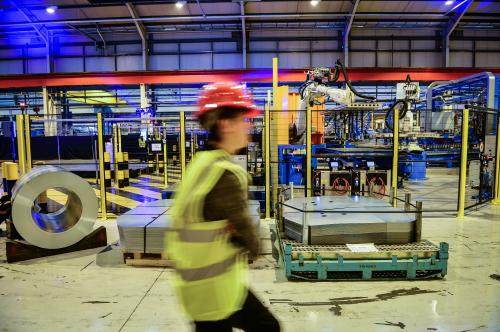

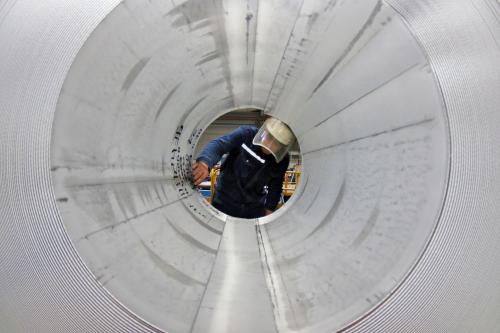
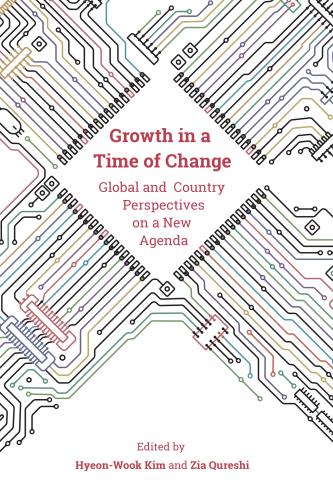



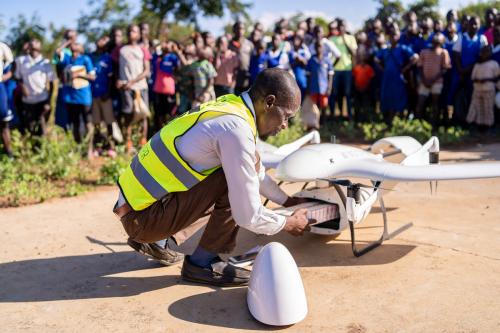
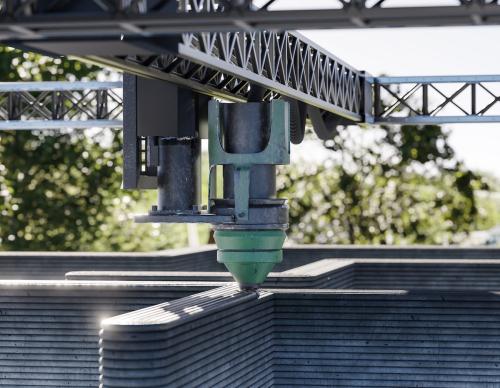
Commentary
The future of global manufacturing
March 4, 2020